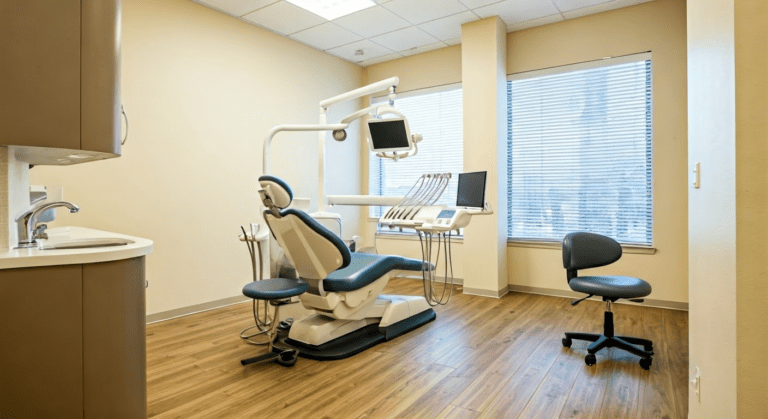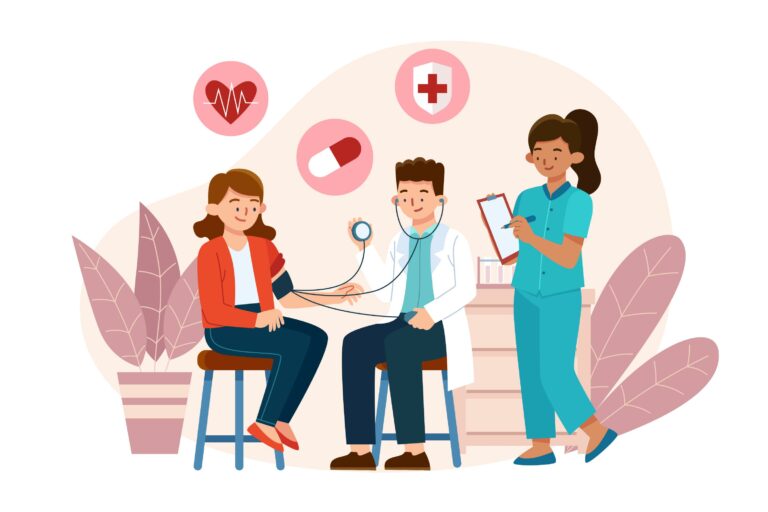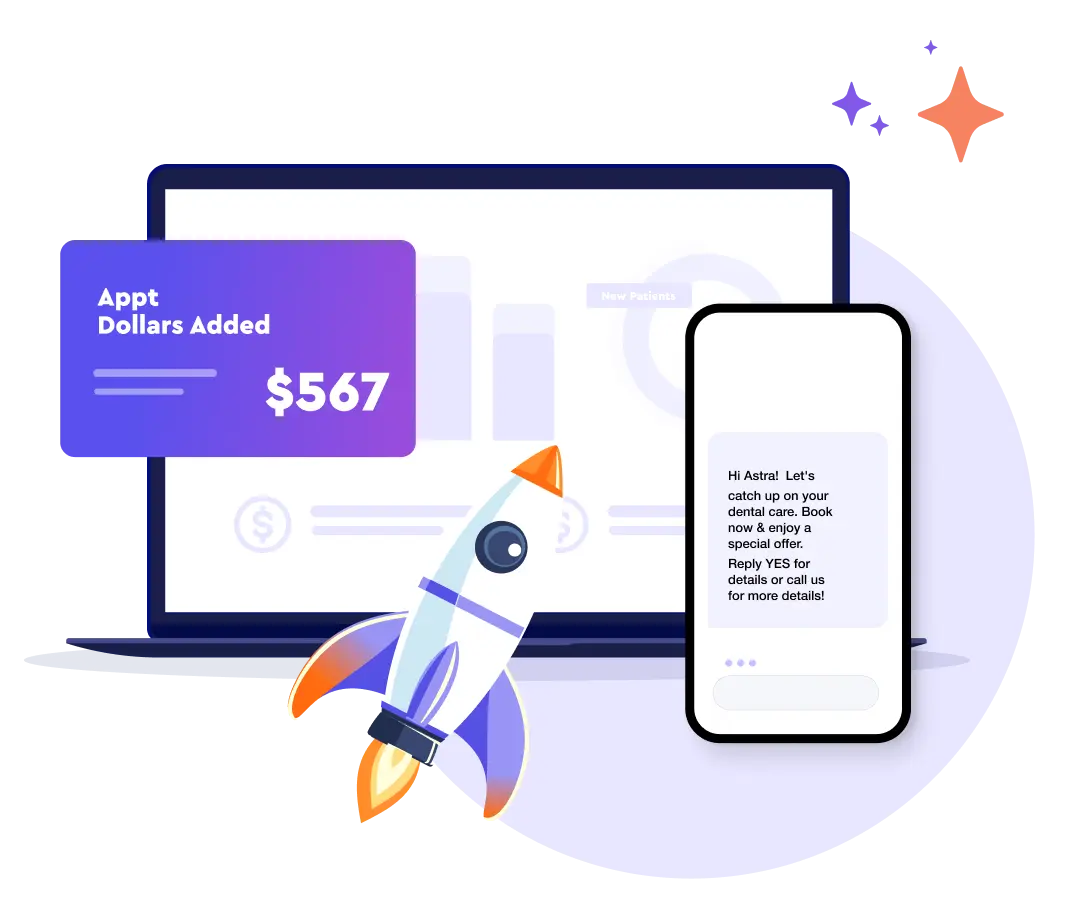How to Ensure Effective Patient Follow Up for Dental Office?
When it comes to dental care, the first visit might feel like the most important—whether it's a routine cleaning or a major procedure. But here's the reality: the true test of a patient's care and comfort happens after they walk out the door. It's like getting braces for the first time. Sure, it might be a nice experience, but you won't know if it's working until you check in a few weeks later.
Effective follow-up in dentistry isn't just about making sure they're not in pain; it's about making them feel supported, informed, and part of the process. After all, a patient who feels cared for will be the first to smile when they return.
Let's discuss how to ensure your patients feel they have a dental team they can trust every step of the way through this blog.
Why Patient Follow-Up Is Important in Dental Care?

Effective patient follow-up is essential in ensuring that care doesn't stop at the Dentist office door. It's about maintaining a connection and actively monitoring progress. Explore how follow-up engagement is crucial in enhancing patient outcomes and supporting patient experience and recovery.
1. Maximizing Patient Health: The Power of Follow-Up Engagement
Imagine a patient who's just had a tooth extraction. Without a timely follow-up, signs of infection could go unnoticed, leading to complications. A quick check-in allows the provider to catch any issues early, adjust medications if needed, and prevent hospital readmissions.
This proactive approach ensures better outcomes and a smoother recovery while making the patient feel supported every step of the way.
2. Seamless Care: Ensuring Continuity Through Consistent Follow-Ups
Picture this: an orthodontic patient who's a few months into treatment. Without regular follow-ups, they could miss crucial adjustments, extending their time in braces. However, by checking in routinely, you ensure their treatment stays on track, reducing the need for emergency visits and creating a seamless, stress-free experience.
This consistent care ultimately leads to better results and a higher quality of life for the patient.
3. Building Trust: The Lasting Impact of Consistent Follow-Ups
Now, imagine a patient who's just had a root canal. A follow-up call to check on their recovery isn't just about medical concerns—it's about showing that their well-being is a priority. This simple act builds trust, making the patient feel valued and secure.
When patients trust their providers, they're more likely to stick to treatment plans and return for future care, knowing they're always supported. Plus, they may refer more patients to your clinic. It's a big win-win!
How do I structure a productive and workable follow-up plan?
Building a productive follow-up plan begins with one key question:
Who is responsible for the follow-up? Is it the dental assistant or the receptionist, or are you, as the dentist, taking on that responsibility yourself? Ideally, it's a team effort. This means receptionists can handle essential check-ins while you, as the dentist, focus on following up after procedures. This ensures thorough care without overwhelming anyone.
Next, how will they follow up? While a phone call is personal, using software like Practice by Numbers for reminders and messages can save time and keep things efficient. But ensure there's still a human touch—automated reminders shouldn't replace personal engagement.
Lastly, what should the timeframe be? Follow up within 24-48 hours after a procedure to catch any immediate issues. Then, check back in a few weeks to ensure everything's healing as expected. Timing helps you spot problems early and keeps patients engaged.
What Ensures a Smooth Patient Follow-Up Process?

Good follow-up isn't just about checking boxes—it's about staying connected. Patients feel supported when healthcare providers communicate clearly and stay on top of appointments. Read the sections below to learn what to do to make patient follow-up protocols work effectively.
1. Personalized Communication Channels
Patients shouldn't feel lost in the shuffle when it comes to follow-up. Offering easy ways to connect—through text, calls, or email—makes all the difference, especially by making an easy patient follow-up template.
A mix of communication methods ensures patients can reach out when needed and feel their concerns are heard. It's all about keeping the conversation flowing without overwhelming them. Think of it like a friend checking in—casual but consistent.
For instance, you may send patient text messages with reminders or updates if they prefer texts over calls. It's simple, but it keeps everyone in the loop.
2. Timely Follow-Up Appointments
We've all been there—appointments get pushed back or forgotten. But regular check-ins with your patients are key to ensuring you're on the right track. No one likes surprise issues cropping up because an appointment was missed.
Automated reminders make it easy to stay on schedule without remembering everything yourself. A simple text or email about an upcoming appointment can be the nudge to avoid a missed visit.
For example, you can text a patient a reminder the day before their follow-up. They can confirm, cancel, or reschedule from their phone without hassle.
3. Adapting to Individual Patient Needs
Everyone's health journey is different. Some people need more hands-on support, while others are more independent. Personalizing follow-up care to match each patient's preferences is a game-changer.
Whether a simple check-in call or a more in-depth consultation, understanding what works best for each person helps them feel comfortable and engaged in their recovery. It's about meeting people where they are.
For instance, if they hate coming into the office, you, as a dentist, might offer a video chat follow-up instead. It's more convenient for you and still gets the job done. However, this might not be suitable most of the time.
4. Supporting Patient Education and Self-Care
Knowledge is power, especially when it comes to managing your dental health. Clear, straightforward information about your patient's condition or treatment plan can make follow-ups more meaningful. Plus, when patients know what to do on their own—like following medical advice or tracking symptoms—they feel more in control.
Offering easy-to-follow guides, virtual check-ins, and even online support groups can help patients take ownership of their health.
For example, after a procedure, you might send the patient an easy-to-understand video on how to care for themselves at home. You might also offer virtual sessions to answer any follow-up questions they may have.
What Are Some Practical Strategies for Effective Patient Follow-Up?
To streamline patient follow-up, focus on regular check-ins, utilize technology for remote care, and ensure seamless coordination between providers. These dental practices improve communication, reduce staff members' workload, and help monitor recovery effectively, providing continuous, high-quality care and catching potential complications early.
1. Automating to Make Life Easier
Automation is a game-changer when it comes to follow-ups, ensuring that every patient's plan of care is effectively monitored. Instead of having staff chase down patients for missed appointments or reminders, the patient follow up system can handle it all, including virtual appointments. Automated reminders, online scheduling, and even walk-in registrations can be set up to run without any manual effort. This frees up your team to focus on more important tasks while making sure no patient is forgotten.
2. Tech That Keeps Everyone Connected
Tech isn't just for techies anymore—it's a lifeline for patient follow-ups. With Practice by Numbers' all-in-one dental software, you can supercharge your dental marketing and patient engagement. It's like having dental care at their fingertips 24/7. Patient can check-in, message the doctor with questions, and even have a consultation without stepping foot in the office. It's convenient and ensures follow-ups happen on time, no matter what.
3. Tracking Success with KPIs
Key Performance Indicators (KPIs) are metrics that help dental care teams see if their follow-up strategies are actually working. With Practice by Numbers' robust analytics tool, you can measure 600+ KPIs. This means, you can monitor things like patient satisfaction, the number of successful follow-ups, and how well patients stick to their treatment plans. These KPIs clearly show whether the patient follow-up system is delivering the results it should.
You can unlock your dental practice's full potential just by using PbN Practice IQ, a cutting-edge platform that offers tailored analytics and deep insights to improve patient outcomes.
4. Getting Feedback to Improve Care
Feedback from patients is one of the best ways to determine whether your follow-up process is really hitting the mark. For example, if a patient had to face the trouble of long wait times during their last visit and they have shared negative feedback about the same, you can ensure that this error doesn't happen again with them or any other patient for that matter.
Such feedback gives you direct insight into what patients like, what they're not, and what could be better. By understanding their preferences and comfort levels, dental care providers can gain valuable insights to tweak the process to more effectively meet patients' individual needs.
5. Always Looking for Ways to Get Better
The best follow-up systems are the ones that never stop improving. Continuously analyzing feedback and KPIs helps healthcare teams spot where things can be fine-tuned.
Whether improving patient follow up through communication or addressing common concerns, the goal is to make the system smoother and more effective for everyone. Focusing on constant improvement increases patient satisfaction, better patient outcomes, and increased referrals too.
How Practice Numbers Simplify Patient Follow-Ups?
Do you think patient follow-up requires more attention, especially when done manually? Following up with patients shouldn’t be a hassle, yet missed appointments and inconsistent communication can hurt your practice. Worry not- Practice by Numbers takes the guesswork out of patient follow-ups with automated reminders, personalized messaging, and real-time engagement tracking. Whether it’s a routine check-up or post-treatment care, our system ensures patients stay informed and committed to their appointments—reducing no-shows and improving retention.
Beyond just reminders, Practice Numbers gives you the data you need to optimize follow-ups. Track patient response rates, identify scheduling gaps, and refine your outreach strategy based on real insights. With seamless integration into your existing workflow, you can stay connected with patients without adding extra work to your team. Book a demo with us to see how we can help you automate patient follow ups effectively!
Conclusion
Patient follow-ups are a prime channel for effective patient care, making patients feel seen, heard, and cared for by a healthcare professional beyond their initial treatment stages. By fostering regular interactions, staying accessible, and personalizing the patient care process, dental care providers can materially affect positive outcomes for patient satisfaction.
With technologies enabling automation, streamlining operations, and inter-provider collaboration, the future of patient follow-up processes looks promising, with continued potential improvement on the horizon. However, the success of these strategies greatly depends on measuring key performance indicators, incorporating patient feedback, and emphasizing continual improvements.
All in all, patient follow-ups can become a cornerstone of comprehensive patient care healthcare management through such consistent efforts.




